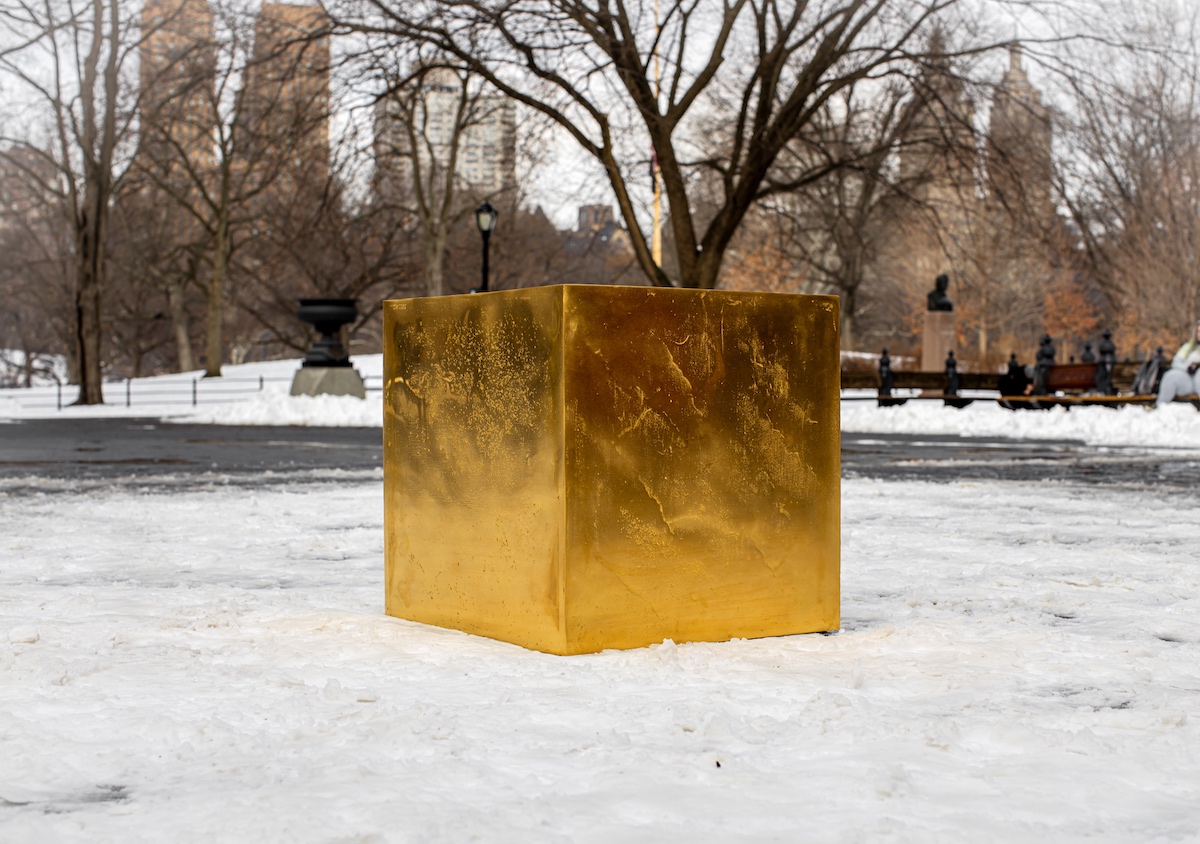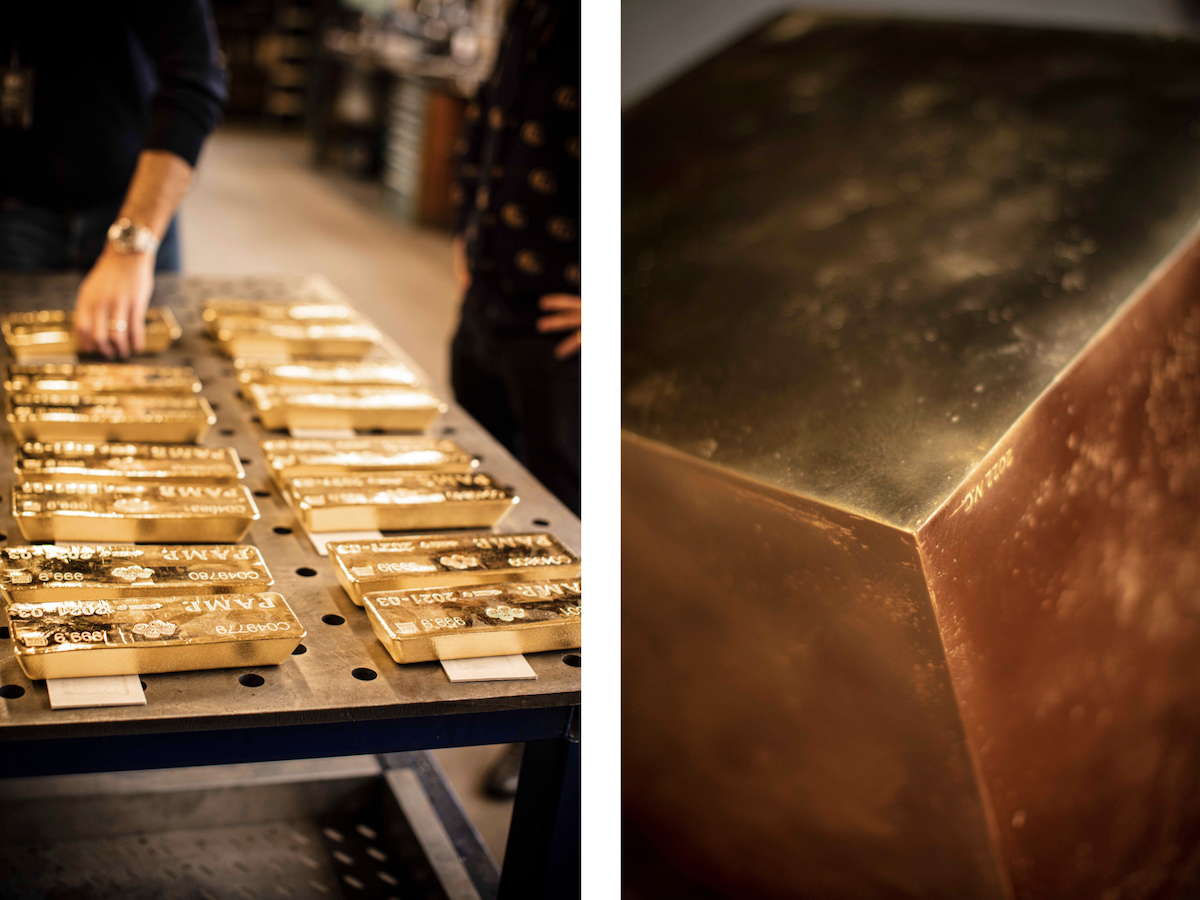On Wednesday, a mysterious golden cube appeared on a mound of icy slush in Central Park’s Naumburg Bandshell amphitheater. Composed entirely of 410 pounds of 24-karat Nevadan gold, the $11.7 million cube is the brainchild of German pop artist Niclas Castello, who claims to be the first artist in history to cast such an enormous amount of gold into a single pure object. To create the sculpture, Castello sourced gold from a UBS Bank in Switzerland and paid a centuries-old bell foundry in Aarau to shape it into a cube—a highly technical process that required a special handmade kiln that could withstand the extreme temperatures needed to melt it. In total, it took more than 4,500 hours of labor.
Anticipation for the Castello Cube was high: a marketing campaign involved a wraparound ad in the New York Times, and curious viewers had mere hours to see it firsthand before it disappeared. (That evening, it was moved to Cipriani Wall Street for a celebratory black-tie dinner attended by celebrities and the art-world cognoscenti.) But was it worth the hype? Though few people can say they’ve ever been around that much gold before, onlookers described the knee-high cube’s appearance as beguilingly plain, if not underwhelming. Others pointed to the immense privilege and capital it requires to pull off such a stunt.


